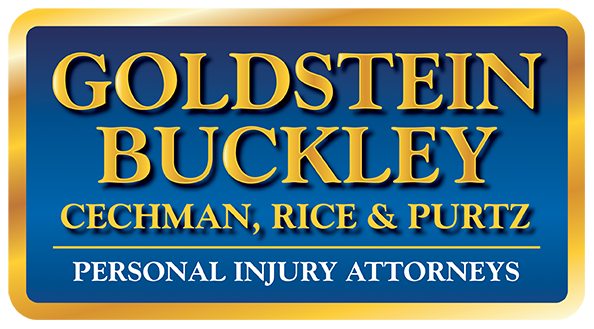A spinal cord injury can drastically change a person’s life, requiring them to make numerous adjustments to various aspects of their daily routines. One crucial aspect that often demands attention is their living environment. Adapting a home to accommodate the unique needs of individuals with spinal cord injuries is an essential step toward promoting their independence, safety, and overall quality of life. In Naples, Florida, Goldstein, Buckley, Cechman, Rice & Purtz, P.A understands the significance of creating a comfortable living space for those who have sustained spinal cord injuries. This article explores the key considerations and requirements for adapting a home in Naples to meet the specific needs of individuals with spinal cord injuries.
Accessibility and Mobility
The first and foremost consideration in adapting a home for individuals with spinal cord injuries is ensuring accessibility and mobility throughout the living space. This involves creating barrier-free pathways and entrances that can accommodate wheelchairs or mobility aids. Ramps, wider doorways, and level thresholds are crucial components of this adaptation. Goldstein, Buckley, Cechman, Rice & Purtz, P.A recognizes the importance of complying with the Americans with Disabilities Act (ADA) regulations to ensure that homes are fully accessible.
Bathroom Modifications
Bathrooms are areas where adaptability is of utmost importance. Installing roll-in showers with grab bars and non-slip flooring can greatly enhance safety and accessibility. Sinks and mirrors should be positioned at a suitable height for wheelchair users, and a raised toilet seat or a wall-mounted toilet can also be beneficial. The legal team at Goldstein, Buckley, Cechman, Rice & Purtz, P.A can guide homeowners through the ADA requirements for bathroom modifications to ensure compliance and functionality.
Kitchen Adjustments
The kitchen is another vital area to consider when adapting a home for individuals with spinal cord injuries. Countertops at varying heights, pull-out shelves, and accessible storage options can make the kitchen more user-friendly. Additionally, appliances should be chosen with care, considering their ease of use and accessibility. Goldstein, Buckley, Cechman, Rice & Purtz, P.A can assist homeowners in understanding the necessary adjustments to ensure a functional and inclusive kitchen space.
Bedroom and Living Spaces
Adapting bedrooms and living spaces involves creating an environment that promotes comfort and accessibility. This can include adjusting the height of the bed, ensuring adequate space for maneuvering a wheelchair, and installing handrails or grab bars where needed. Proper lighting and easy-to-reach switches are also important for creating a safe and welcoming atmosphere. Goldstein, Buckley, Cechman, Rice & Purtz, P.A can provide insights into the legal aspects of creating adaptive living spaces that meet the needs of individuals with spinal cord injuries.
Technology Integration
Modern technology can play a significant role in enhancing the quality of life for individuals with spinal cord injuries. Home automation systems can enable individuals to control various aspects of their environment, such as lighting, temperature, and entertainment, through voice commands or smartphone apps. These systems can greatly improve independence and convenience. Goldstein, Buckley, Cechman, Rice & Purtz, P.A can advise homeowners on integrating assistive technology while adhering to accessibility standards.
Legal Considerations
Adapting a home for individuals with spinal cord injuries involves not only physical modifications but also legal considerations. Goldstein, Buckley, Cechman, Rice & Purtz, P.A is well-versed in the legal requirements related to accessibility and can guide homeowners through the relevant regulations, permits, and documentation necessary for home adaptations. Ensuring compliance with ADA standards and local building codes is crucial to avoid potential legal issues.
Financial Assistance and Insurance Coverage
Home modifications for spinal cord injuries can incur significant costs. However, there are various financial assistance programs, grants, and insurance coverage options available to help offset these expenses. The legal experts at Goldstein, Buckley, Cechman, Rice & Purtz, P.A can provide valuable information on exploring these avenues and understanding the options for obtaining financial support for home adaptations.
Integration of Supportive Services
Beyond physical modifications, creating a supportive environment involves more than just adapting the physical aspects of the home. Emotional and psychological well-being are equally important considerations. Integrating supportive services such as counseling, peer support groups, and professional caregivers can provide individuals with spinal cord injuries the necessary tools to navigate their new way of life. These services can help individuals cope with challenges, share experiences, and develop strategies for maintaining a positive outlook.
In Naples, Florida, several organizations and support groups cater specifically to individuals with spinal cord injuries and their families. These groups provide a platform for individuals to connect, share resources, and access valuable information. Goldstein, Buckley, Cechman, Rice & Purtz, P.A can also offer insights into local resources and organizations that can assist in creating a strong support network for those going through the adaptation process.
Emphasizing Mental and Emotional Well-being
The emotional impact of a spinal cord injury can be profound, affecting not only the individual but also their family members and caregivers. Adapting a home should extend beyond the physical modifications to address the mental and emotional well-being of everyone involved. Designing spaces that promote relaxation, leisure, and social interaction is essential. Accessible outdoor areas, comfortable seating, and calming aesthetics can contribute to creating a positive atmosphere that fosters emotional healing and resilience.
Staying Active and Engaged
Adapting a home for individuals with spinal cord injuries doesn’t mean sacrificing an active lifestyle. In fact, it’s important to incorporate opportunities for physical activity and engagement within the home environment. Home gyms with adaptive exercise equipment, accessible outdoor spaces for recreation, and designated areas for hobbies or creative pursuits can all play a role in maintaining an active and fulfilling lifestyle.
Collaboration with Professionals
While many home adaptations can be DIY projects, enlisting the help of professionals experienced in adaptive design can significantly enhance the overall outcome. Architects, interior designers, and contractors with expertise in accessible design can provide invaluable insights and ensure that modifications are both functional and aesthetically pleasing. Working with such professionals, in conjunction with the legal experience of firms like Goldstein, Buckley, Cechman, Rice & Purtz, P.A, can result in a well-rounded approach to home adaptations.
Adapting a home for individuals with spinal cord injuries requires a comprehensive approach that encompasses accessibility, safety, functionality, and legal compliance. In Naples, Florida, Goldstein, Buckley, Cechman, Rice & Purtz, P.A stands as a reliable resource for individuals seeking guidance on creating a suitable living environment for themselves or their loved ones. By considering the unique needs of those with spinal cord injuries and collaborating with legal experts, homeowners can create a space that promotes independence, enhances quality of life, and ensures a comfortable and inclusive living experience.
